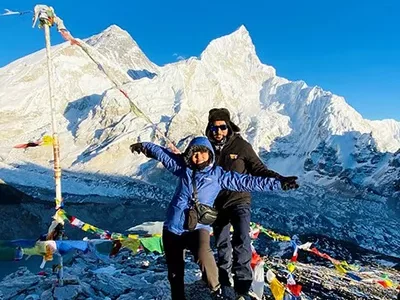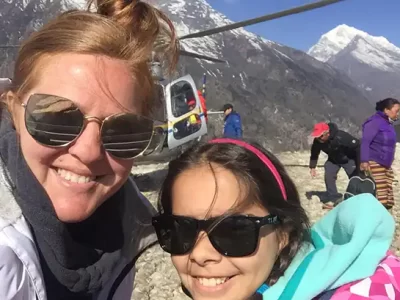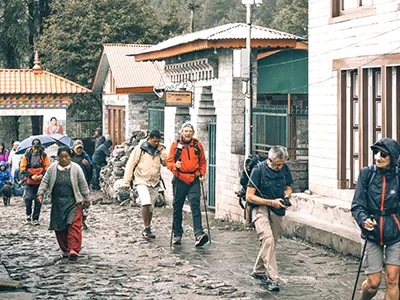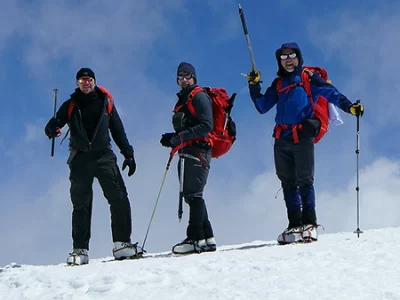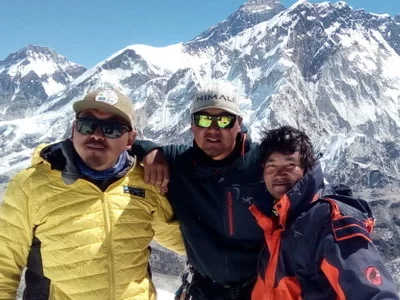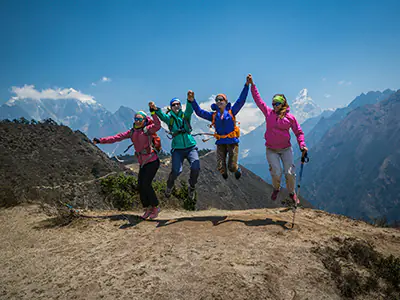Lobuche village, at an altitude of 4940 meters, is a major stop for trekkers on their way to Everest Base Camp, Mera Peak, and Lobuche Peak. Located in the Khumbu district of Nepal, this picturesque village offers breathtaking views of the Himalayas and is an important training base for trekkers. With its strategic location and breathtaking views, Lobuche Village attracts any Everest trekker to the county of the county.
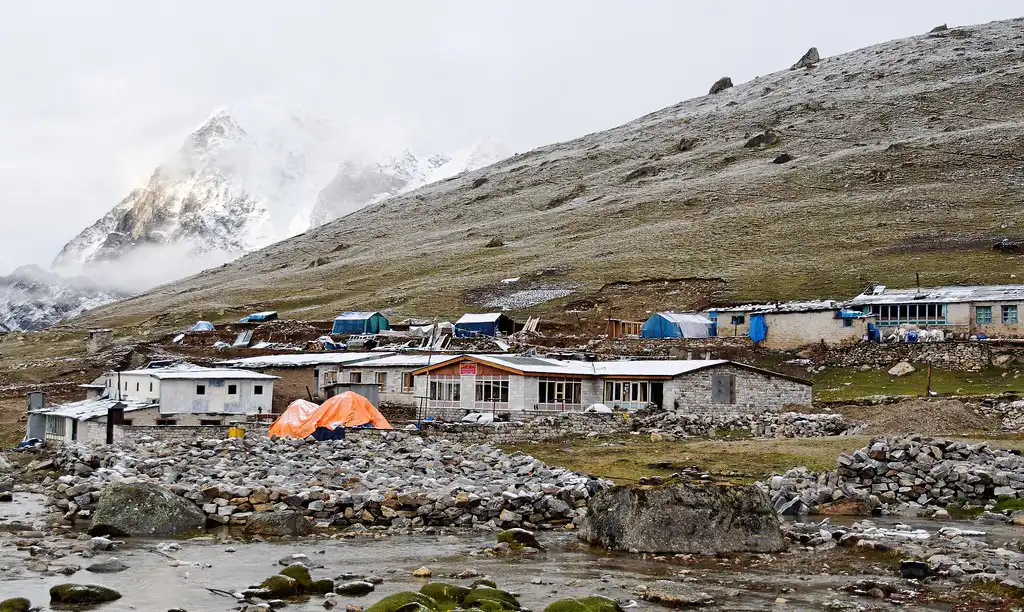
Lobuche Nepal lies close to major trekking destinations. The popular route from Lobuche to Everest Base Camp draws adventurers from all over the globe. Lobuche Base Camp marks the starting point for those aiming to conquer Lobuche Peak. This challenging climb rewards trekkers with stunning panoramic views.
The village provides essential amenities, including lodges and tea houses, making it a convenient rest stop. Situated at 4940 meters, Lobuche Village serves as a gateway to various outdoor adventures. Climbers find the Lobuche summit a thrilling ascent with panoramic vistas.
Meanwhile, Lobuche Park offers nature enthusiasts a chance to explore the region’s diverse flora and fauna. Whether you’re gearing up for a Lobuche climb or soaking in the serene environment, this village blends natural beauty and cultural richness, making it a vital part of any trekking itinerary in the Everest region.
Everest Base Camp Trek
Everest Base Camp Trek with Helicopter Return
Luxury Everest Base Camp Trek
Major Attractions of Lobuche Village
Lobuche Village captivates trekkers and adventurers with its array of stunning attractions. The village presents a breathtaking panoramic view of the Himalayan peaks, including Nuptse, Pumori, and both Lobuche East and West. These towering mountains create a spectacular backdrop, transforming the village into a haven for photographers.
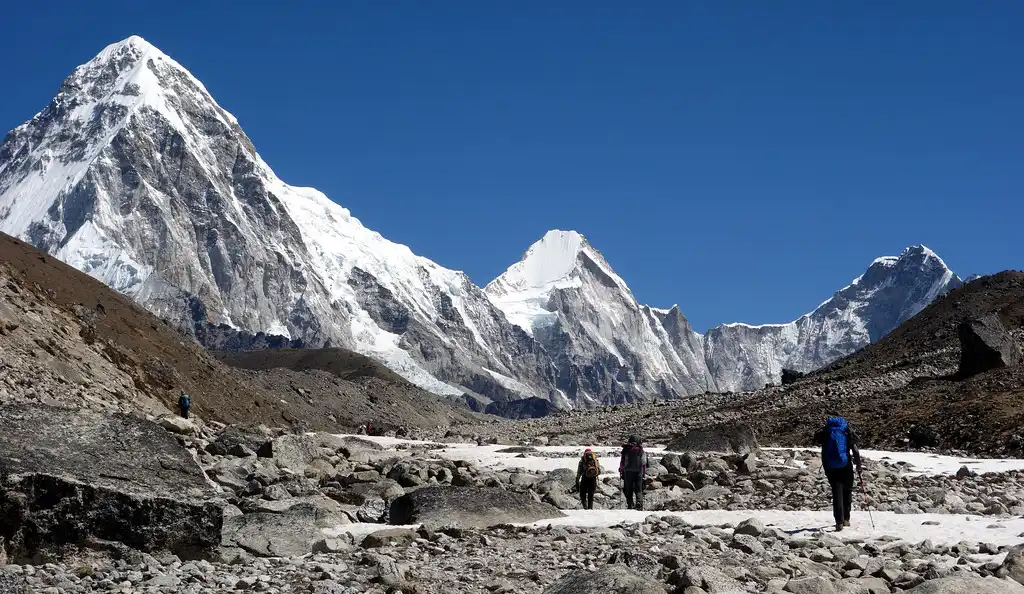
The village hosts poignant memorials for climbers who have perished on Everest, serving as a sobering tribute to the risks of the mountain and the bravery of those who challenge its heights.
Lobuche Base Camp, easily accessible from the village, marks the starting point for climbs to Lobuche Peak. This base camp attracts climbers eager to navigate its demanding terrain. Nearby, the vast Khumbu Glacier beckons. Whether one is climbing, trekking, or simply reveling in the natural landscape, Lobuche Village offers enriching experiences for all visitors.
Lobuche Altitude
Lobuche Village sits at an impressive altitude of 4940 meters, ranking it among the highest settlements on the Everest trekking trail. At this lofty elevation, trekkers need to allocate sufficient time for acclimatization to sidestep altitude sickness.
The rarefied air and diminished oxygen levels at this altitude challenge visitors yet reward them with extraordinary panoramic vistas of the Himalayan peaks that encircle the village. Navigating the Lobuche altitude requires trekkers to adapt to the physical demands of residing nearly 5 kilometers above sea level.
Many opt to extend their stay in Lobuche, using it as a base to acclimatize before pushing onward to Everest Base Camp or setting out to summit Lobuche Peak. This strategic positioning of the village as a high-altitude stop offers a crucial acclimatization phase, equipping adventurers for the even higher elevations they will face as they advance.
Mera Peak Climbing
Lobuche Peak Climbing
Everest Base Camp Trek for Beginners
Trekking Routes from Lobuche
1. Trek from Lobuche to Everest Base Camp
Trekking from Lobuche to Everest Base Camp (EBC) is a crucial segment of the Everest trip.
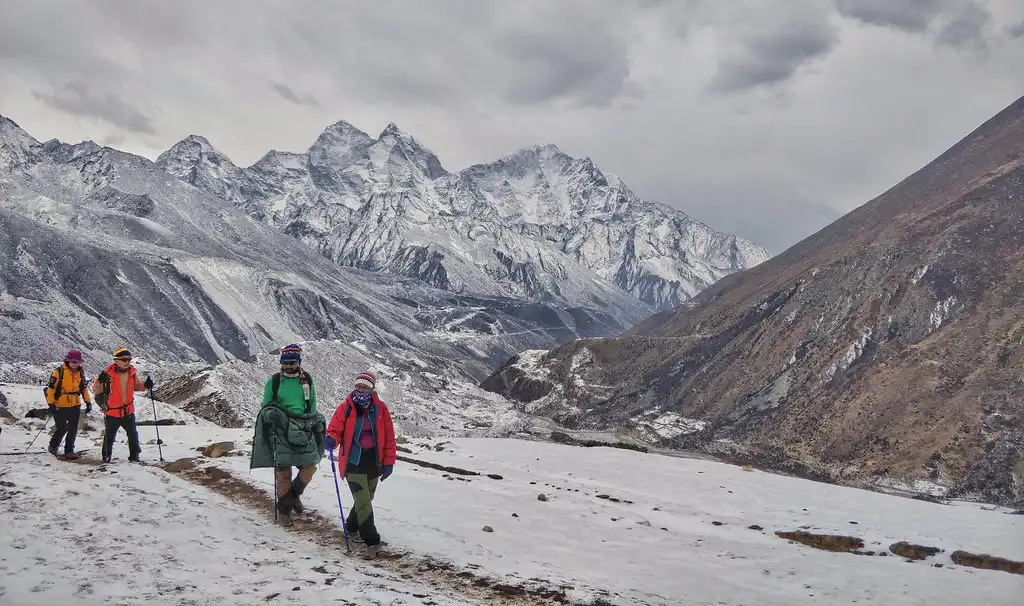
This stretch spans approximately 8 kilometers and typically takes about 8-9 hours, depending on the trekker’s pace and acclimatization level.
Route Overview
Trekkers start their trip early in the morning from Lobuche. The trail initially meanders through rocky terrain and moraines, following the Khumbu Glacier.
As trekkers advance, the path becomes more challenging, with a gradual ascent towards Gorak Shep, the last settlement before EBC. After a brief rest at Gorak Shep, trekkers continue the final stretch to Everest Base Camp, navigating through glacial moraines and icefalls.
Duration and Difficulty Level
Duration: 8-9 hours round trip
Difficulty Level: High. This trek involves significant altitude gain, reaching up to 5364 meters at EBC. The combination of high altitude, cold weather, and rocky terrain makes this trek physically demanding.
Preparation Tips
- Acclimatization: Spend extra days at Lobuche or other high-altitude villages to acclimatize.
- Start Early: Begin the trek early in the morning to take advantage of daylight and more stable weather conditions.
- Stay Hydrated: Keep yourself well-hydrated and lower your chance of altitude sickness by drinking lots of water.
- Pack Light: Carry only essential items to minimize the physical burden.
2. Trek from Lobuche to Mera Peak
Mera Peak, standing at 6476 meters, ranks as one of Nepal’s highest trekking peaks. The route to Mera Peak from Lobuche is less direct and involves several days of trekking through diverse landscapes.
Route Overview
Trekkers typically start their trip to Mera Peak base camp by descending from Lobuche to lower altitude regions before gradually ascending towards Mera.
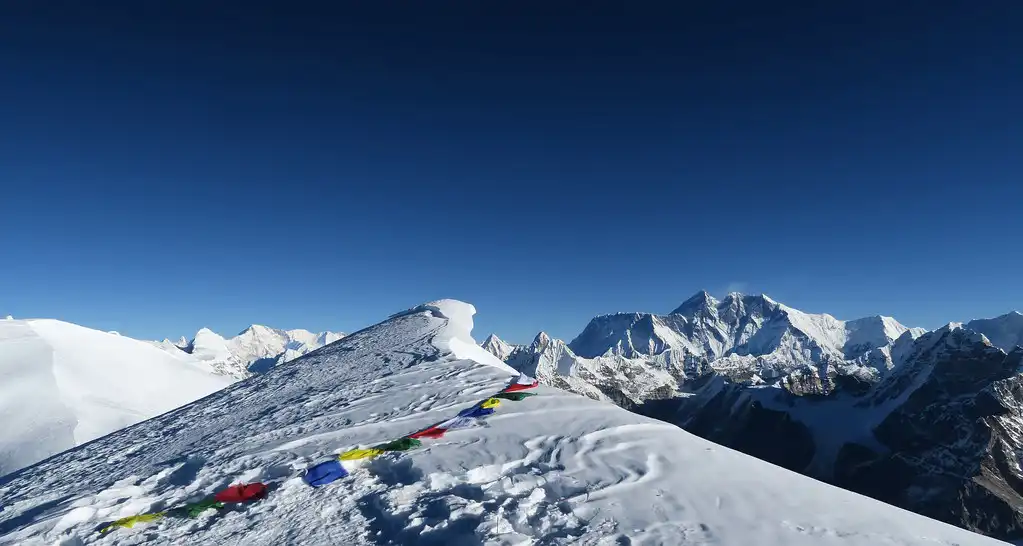
The trail takes trekkers through scenic valleys, dense forests, and high-altitude passes like the Zatrwa La Pass (4610 meters). The trek to Mera Peak base camp is both scenic and challenging, offering trekkers a mix of cultural and natural experiences.
Duration and Difficulty Level
Duration: 7-10 days, depending on the route and pace.
Difficulty Level: Moderate to difficult. This trek involves crossing high passes and dealing with significant altitude gain.
Preparation Tips
- Physical Fitness: Engage in regular cardiovascular and strength training exercises to prepare for the trek.
- Proper Gear: Ensure you have appropriate trekking gear, including warm clothing, sturdy boots, and camping equipment.
- Guide and Permits: Hire a local guide for navigation and obtain necessary climbing permits before the trek.
3. Trek from Lobuche to Lobuche Peak
Lobuche peak climbing presents a thrilling challenge for mountaineers. This climb involves trekking to the Lobuche Peak base camp, followed by a technical ascent to the summit.
Route Overview
The trek from Lobuche Village to Lobuche Peak base camp is a short but steep climb, typically taking one day. The base camp sits at around 5200 meters.
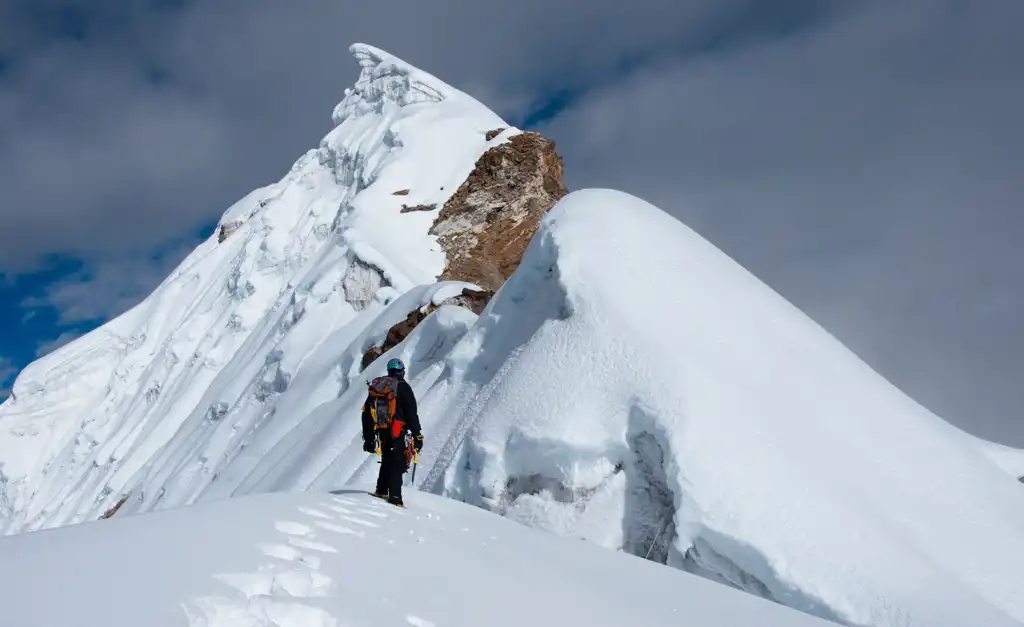
After setting up camp, climbers prepare for the summit push, which usually starts in the early morning hours. The ascent involves navigating through rocky and icy terrains, requiring technical climbing skills and equipment.
Duration and Difficulty Level
Duration: 2-3 days, including acclimatization and summit attempt.
Difficulty Level: Difficult. Climbing Lobuche Peak requires technical climbing skills, including the use of crampons, ropes, and ice axes. The altitude and harsh weather conditions add to the challenge.
Preparation Tips
- Technical Skills: Gain experience in technical climbing and familiarize yourself with the equipment.
- Acclimatization: Spend sufficient time acclimatizing at Lobuche Village and base camp.
- Climbing Gear: Equip yourself with high-quality climbing gear, including helmets, harnesses, and protective clothing.
- Safety Measures: Ensure all safety measures are in place and consider climbing with experienced guides or mountaineers.
Accommodation in Lobuche Village
Lobuche Village relies heavily on tourism, with many Sherpa men working as porters or guides. Several residents have transformed their huts into small lodges or guesthouses to accommodate trekkers.
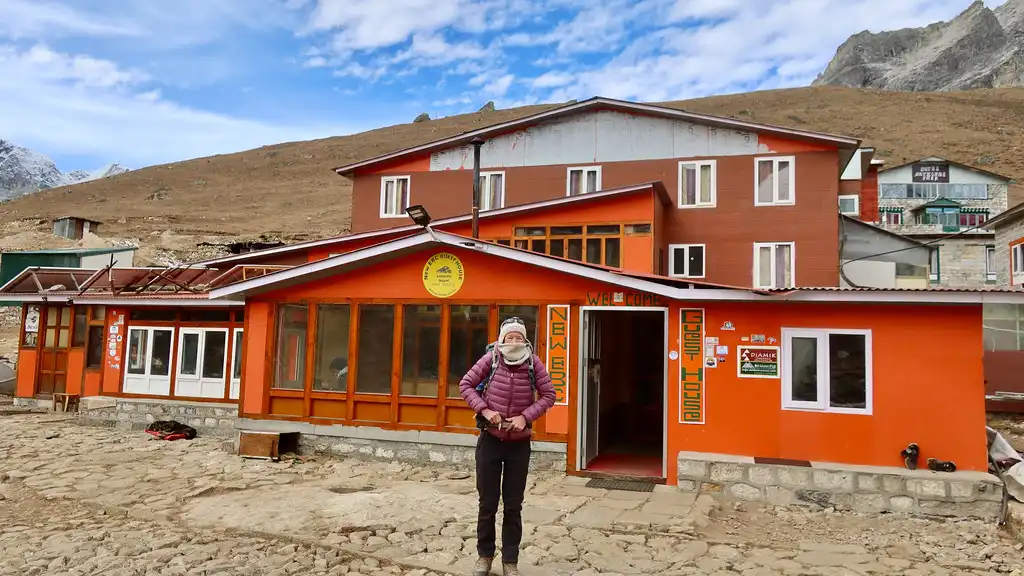
When you arrive at the village, you can pay for your lodging directly at the entrance. Afterward, you’ll be able to select a structure that best suits your needs for the night. These lodges provide basic amenities, including a warm bed and a place to rest after a long day of trekking.
Lobuche also offers the option of camping overnight in a designated area for free. The village provides this space, allowing hikers to pitch their tents. Every hotel in Lobuche has an on-site restaurant where you can enjoy cheap food and drinks.
These restaurants offer a variety of local and international dishes, providing the necessary nourishment for the arduous trek ahead. Whether you prefer to stay in a hotel or a tented camp, the village ensures that all guests are welcome and relaxed.
Best Times to Visit
Spring (March to May)
Spring is a highly popular time for trekking in the Everest region, including Lobuche. During this season, the weather remains relatively stable, with moderate daytime temperatures ranging from 10°C to 15°C at lower elevations and between -5°C and five °C at higher altitudes like Lobuche.
Nights can be much colder, so bringing warm clothing is essential. The blooming rhododendrons and other wildflowers add vibrant colors to the landscape, enhancing the trekking experience.
Due to the favorable weather and natural beauty, this season attracts many trekkers. As a result, lodges and guesthouses in Lobuche often fill up quickly. Booking accommodations several months in advance is crucial to ensure availability and a smoother trekking experience.
Autumn (September to November)
Another popular season for trekking in the Everest region is autumn. The weather is still stable, and the sky is clear with beautiful views of the mountains. Daytime temperatures are summer-like, from 10 degrees Celsius to 15 degrees Celsius at low altitudes, with freezing temperatures at higher altitudes; night temperatures tend to be below freezing and dry, and less slippery roads provide ideal walking conditions.
The excellent visibility at this time is perfect for capturing and photographing mountain photos. Due to the stable weather and spectacular scenery, autumn attracts a high number of trekkers, leading to a high demand for accommodation in Lobuche. Planning and reserving your lodgings several months before your trek will help secure a comfortable stay.
Winter (December to February)
Winter offers a unique and serene trekking experience in the Everest region but comes with significant challenges due to harsh cold and snow. Daytime temperatures at lower elevations range from -10°C to 5°C, while higher altitudes like Lobuche can experience temperatures dropping to -20°C or lower at night. Snowfall and icy conditions are common, especially at higher altitudes, making trekking more demanding.
However, the winter season means fewer crowds, offering a more peaceful and solitary trekking experience. I believe many lodges remain open, but it is best to check ahead to confirm their operational status. Adequate preparation with cold-weather gear, including thermal layers and a high-quality sleeping bag, is essential.
Monsoon (June to August)
The monsoon season in the Everest region brings heavy rains, making trekking conditions challenging. Daytime temperatures are warmer, ranging from 15°C to 20°C at lower elevations, while higher altitudes like Lobuche remain cooler but generally above freezing.
Heavy rainfall can make trails muddy and slippery, increasing the risk of landslides and flooding. Visibility often reduces due to clouds and rain, although mornings tend to be clearer. Despite these challenges, the monsoon season sees fewer trekkers, leading to higher availability of accommodations in lodges and guesthouses.
Some lodges remain open to cater to the reduced number of trekkers. It is crucial to bring waterproof gear, including rain jackets, pants, and backpack covers, and to be cautious on slippery trails. The lush, green landscapes during this season can provide a unique experience for those who don’t mind the wet conditions and prefer fewer crowds.
Lobuche Weather
The weather in Lobuche changes dramatically with the seasons, greatly affecting hiking conditions. The climate is relatively stable in summer (March to May) and autumn (September to November). The nights are very cold, often dropping below freezing. The clear skies during these times offer great views of the Himalayas, making these times ideal for trekking.
In contrast, winter (December to February) in Lobuche brings harsh conditions. Daytime temperatures at lower elevations range from -10°C to 5°C, while higher altitudes often experience temperatures dropping to -20°C or lower at night.
Snowfall and icy conditions are frequent, adding to the trekking challenges. The monsoon season (June to August) brings heavy rains, making trails muddy and slippery and increasing the risk of landslides and flooding. Despite these challenges, each season offers a unique experience for trekkers as long as they are well-prepared for the conditions.
Altitude Tips: Surviving 4940m
To survive Lobuche’s high altitude of 4940 meters, preventing altitude sickness and other health problems requires careful preparation and proper acclimatization. Ascending is crucial for a successful trek in such elevated environments if done slowly. Plan to take at least a couple of days to adapt to the altitude before reaching Lobuche. This gradual ascent allows your body to adjust to the thinner air.
During this period, monitor yourself for any signs of altitude sickness and keep your activity level moderate to avoid overexertion. Symptoms like headaches, nausea, and dizziness are common altitude-related issues and should be taken seriously as early indicators of potential health concerns. Managing hydration and rest is essential for coping effectively with high altitudes.
The body dehydrates faster at higher elevations, so increasing your water intake is crucial. Aim to drink between 3 to 4 liters of water daily to stay properly hydrated. Rest is equally important for acclimatization, so make sure you get plenty of sleep each night and take it easy during the day. Proper preparation and awareness can significantly enhance your ability to enjoy the breathtaking high-altitude landscapes of Lobuche safely.
Dingboche/Pheriche to Lobuche Village
The trek from Dingboche or Pheriche to Lobuche Village marks a significant part of the Everest Base Camp trek. When starting from Dingboche, you gradually ascend through a picturesque valley, passing the small settlement of Dughla (Thukla). The route provides stunning views of peaks like Taboche and Cholatse.
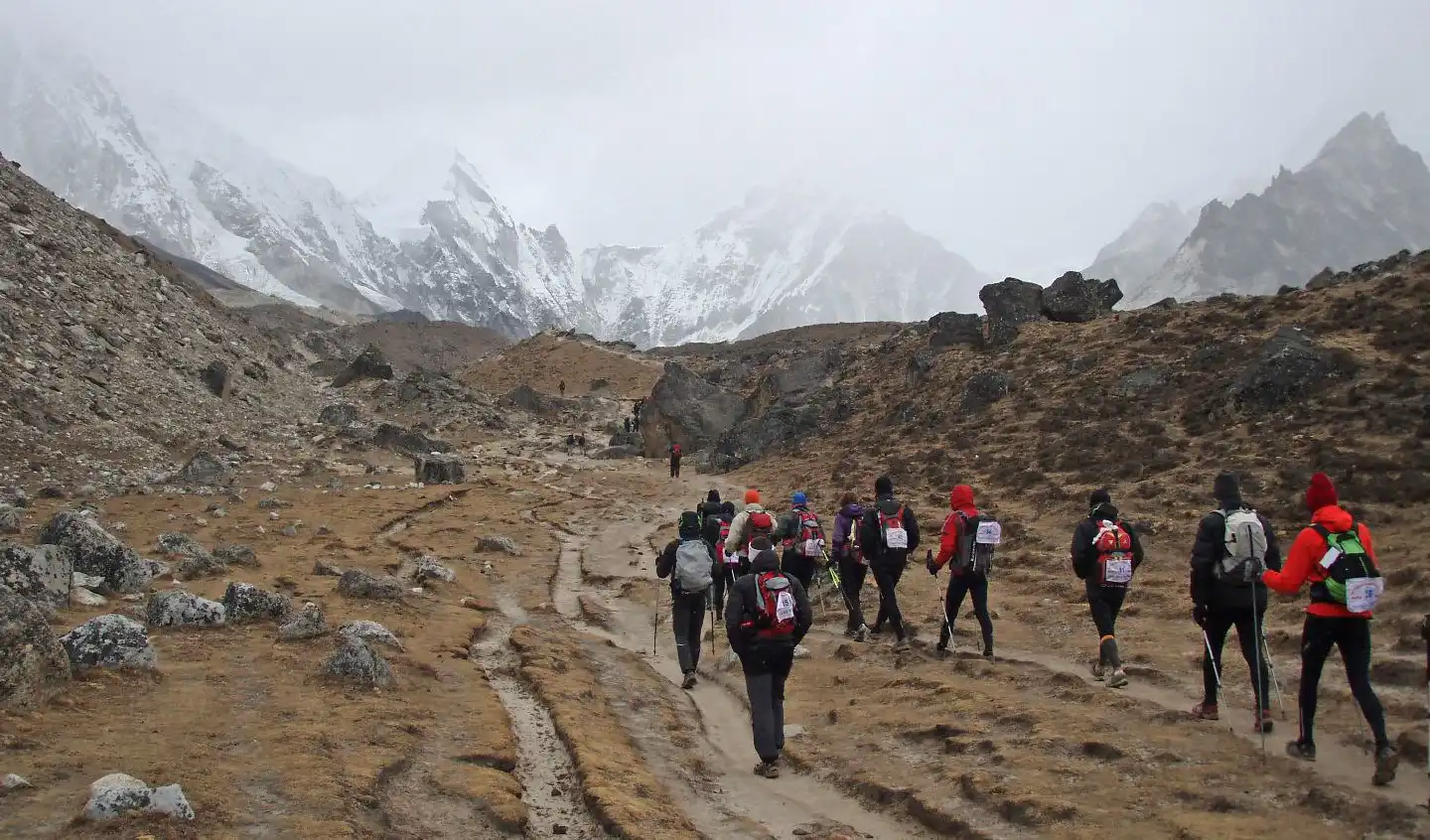
As you approach the Thukla Pass, where memorials honor climbers who lost their lives on Everest, the climb becomes steeper. This section demands careful pacing to manage the increasing altitude, with Dingboche at 4410 meters and Lobuche at 4940 meters. Starting from Pheriche, the trail initially follows a relatively flat path alongside the Dudh Koshi River before gradually ascending towards Thukla.
The trek from either village usually takes 5-6 hours, depending on weather conditions and individual pace. As you get closer to Lobuche, the landscape turns more barren and rocky, with the towering peaks of the Khumbu Glacier providing a dramatic backdrop. This part of the trek is physically demanding due to the altitude, but the breathtaking views and sense of achievement make it an unforgettable experience.
Lobuche to Gorakshep and Everest Base Camp
The trek from Lobuche to Gorakshep is a vital segment of the Everest Base Camp trek. This part of the trek typically takes 3-4 hours and involves navigating rocky moraines and glacial paths. Departing from Lobuche, you gradually ascend alongside the Khumbu Glacier, which offers awe-inspiring views of towering peaks like Pumori and Nuptse.
The terrain becomes more challenging as you near Gorakshep, the last settlement before Everest Base Camp, situated at 5164 meters. From Gorakshep, the final trek to Everest Base Camp usually takes another 2-3 hours. The path, marked by rugged terrain and glacial debris, demands careful footing.
Reaching Everest Base Camp at 5364 meters is a significant achievement, providing trekkers with iconic views of the Khumbu Icefall and surrounding peaks. Despite the physical demands, the trek from Lobuche to Gorakshep and Everest Base Camp offers an unforgettable experience filled with breathtaking landscapes and a profound sense of accomplishment.
What to Pack: Essentials for Lobuche
Clothing
- Base Layers: Wear moisture-wicking thermal tops and bottoms.
- Insulating Layers: Pack fleece jackets and down vests.
- Warm Layers: Include a heavy down jacket.
- Trekking Pants: Opt for lightweight, quick-drying pants.
- Gloves: Use thermal and waterproof gloves.
- Hats and Buffs: Carry a warm hat and neck gaiter.
- Trekking Socks: Choose moisture-wicking and warm socks.
- Underwear: Bring quick-drying underwear.
Gear
- Sturdy Boots: Wear waterproof trekking boots with ankle support.
- Backpack: Use a 40-50 liter backpack with a rain cover.
- Sleeping Bag: Bring a four-season sleeping bag rated for -20°C.
- Trekking Poles: Use adjustable poles.
- Headlamp: Carry a headlamp with extra batteries.
- Water Bottles and Purification: Pack 2 x 1-liter bottles or a hydration bladder and purification tablets/filter.
- Sunglasses: Wear UV-protection sunglasses.
- Hat: Use a wide-brimmed hat for sun protection.
- First Aid Kit: Include basic medical supplies.
- Portable Charger: Pack a portable charger for electronic devices.
Medical Supplies
- Altitude Sickness Medication: Carry Diamox or similar medication.
- Pain Relievers:Bring ibuprofen or acetaminophen.
- Anti-Nausea Medication: Include ondansetron or similar.
- Diarrhea Medication: Pack Imodium or similar.
- Personal Prescriptions: Ensure you have enough personal medications for the trek plus extra days.
- Hydration Salts: Use electrolyte powders or tablets.
- Antibacterial Gel: Carry antibacterial gel for hand sanitation.
Frequently Asked Questions
1. How hard is it to climb Lobuche?
Climbing Lobuche Peak is quite challenging due to its technical sections and high altitude. Climbers need to have prior experience trekking at high altitudes and be in excellent physical shape.
The ascent involves steep, rocky paths, ice, and glacier traverses, requiring skills such as using crampons, ropes, and ice axes. The climb from Lobuche High Camp to the summit includes navigating a steep ascent and a snowy ridge, making it suitable for experienced climbers.
2. Is Lobuche a trekking peak?
The Nepal Mountaineering Association classifies Lobuche East as a trekking peak. Despite this classification, it is one of the more challenging trekking peaks due to its technical sections and altitude, requiring both trekking and basic mountaineering skills.
3. How much does it cost to climb Lobuche?
The cost to climb Lobuche Peak with Peregrine Treks is approximately USD 2450. This price covers permits, guide, and porter services, accommodations, and meals during the trek. Additional expenses may include personal equipment, travel insurance, and other personal costs.
4. What is the difference between Lobuche East and Lobuche West?
Lobuche East (6119 meters) and Lobuche West (6145 meters) are two distinct summits on the Lobuche massif. Lobuche East is commonly climbed and is considered a trekking peak, involving a mix of trekking and mountaineering skills.
Lobuche West is classified as an expedition peak and is less frequently climbed due to its more technical and demanding routes, often requiring advanced climbing techniques and more robust preparation.
5. Which is harder, Lobuche or Island Peak?
Lobuche Peak is generally considered more challenging than Island Peak. Both peaks require climbers to be well-prepared and physically fit, but Lobuche Peak has steeper and more technical routes. Island Peak, while also demanding, is seen as more accessible for climbers with less technical climbing experience.
6. How tall is Lobuche?
Lobuche East stands at 6119 meters (20,075 feet), while Lobuche West is slightly higher at 6145 meters (20,161 feet).
7. How long is the trek from Lobuche to Everest Base Camp?
The trek from Lobuche to Everest Base Camp typically takes about 2-3 hours, covering a distance of approximately 4.5 kilometers. The route involves navigating through glacial moraines and rugged terrain, requiring careful footing and acclimatization.
Conclusion
Visiting Lobuche Village offers trekkers an unforgettable experience on their trek to Everest Base Camp. At 4940 meters, this high-altitude village provides stunning views of the Himalayan peaks and serves as an essential acclimatization stop.
Lobuche provides essential facilities and a place to relax for those taking on the demands of high-altitude trekking and climbing with its blend of natural beauty and cultural legacy.
Proper acclimatization, thorough preparation, and respect for the local environment and culture are crucial for a successful visit. Embrace the unique beauty and challenges of Lobuche, and let this remarkable village enhance your trekking adventure in the Everest region.

